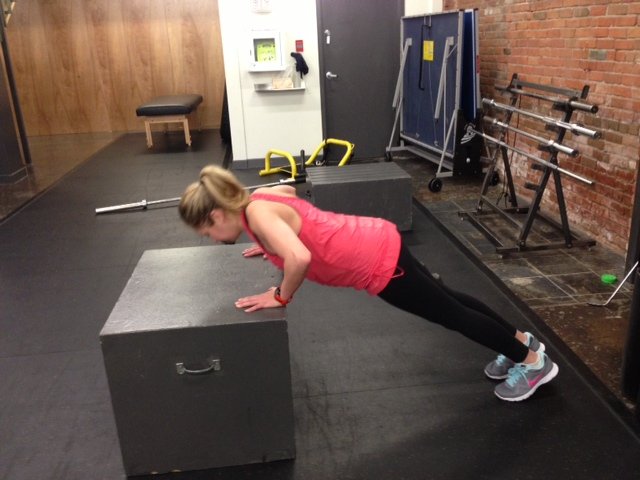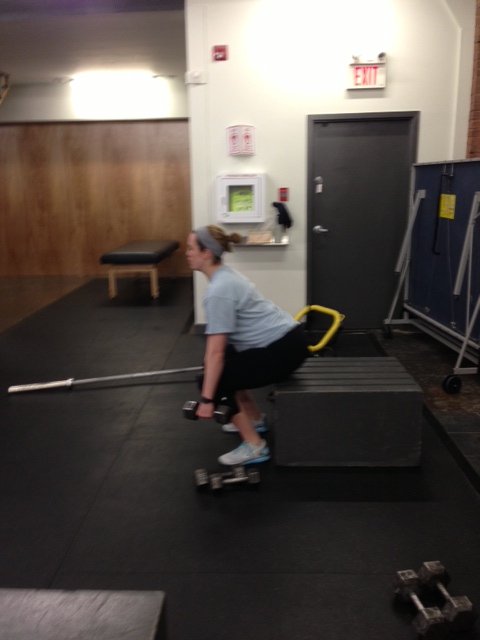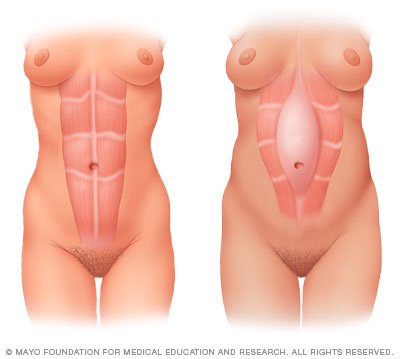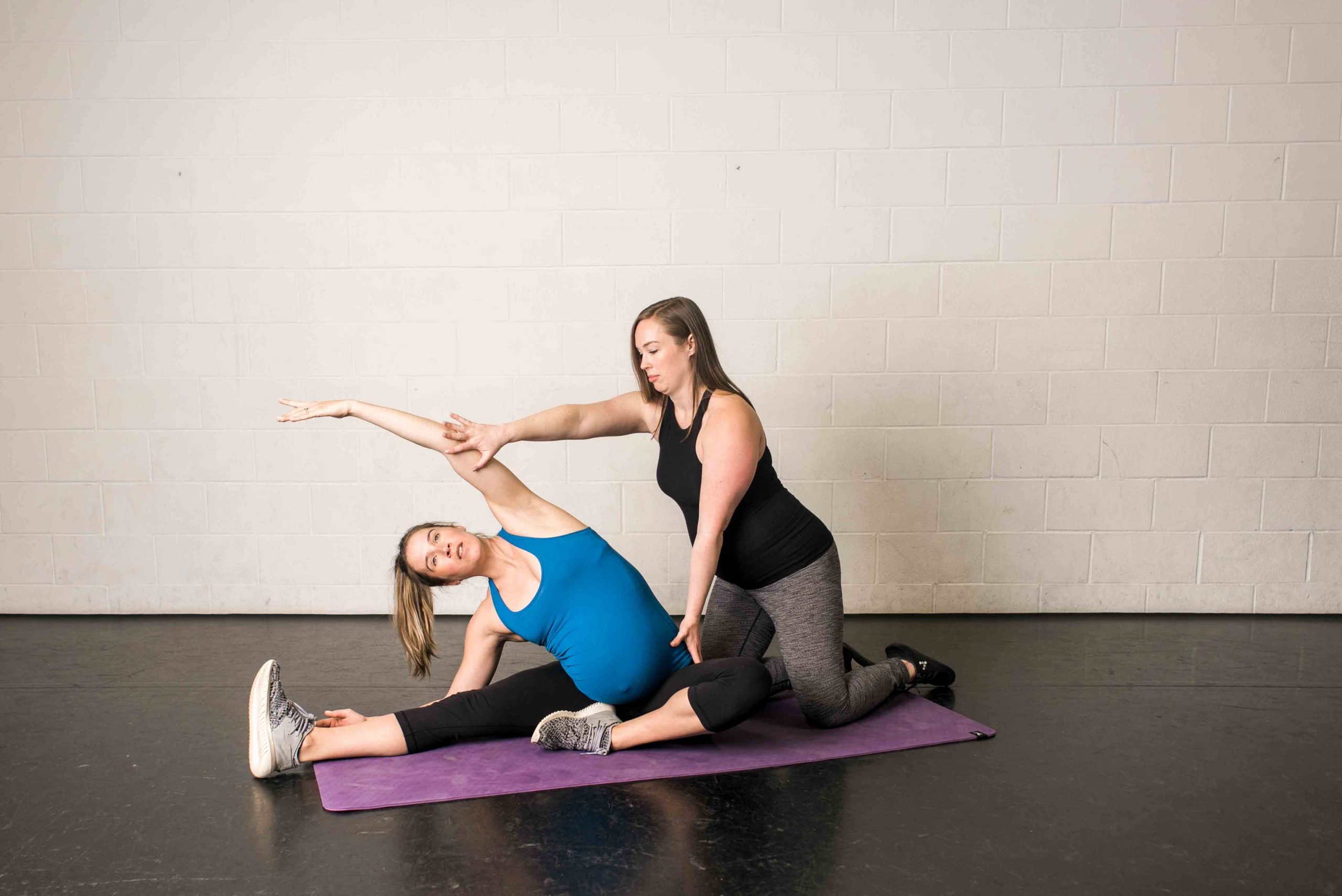If you missed the first article, Must Do’s for Pregnancy Workouts – Part 1, check it out before you read on to catch up. To recap, I talked about the necessity of strength training, understanding the purpose of abdominal training, what Diastasis Recti (DR) is, why to focus on training the backside of the body, and the importance of paying attention to how your body feels. In Part 2, we’ll cover how to breathe properly, specific core exercises to help you in pregnancy and what heart zone you should work out in.

Must Do’s of Prenatal Exercise #6-8
6). (Re)Learn How to Breathe
Today alone I’ve had people practice breathing for relaxation, to relieve lower back pain, and to help treat shoulder and neck issues. I literally said to a client today, “Breathing is magic”. It’s the straight up truth. All increasing during pregnancy are pressure on the diaphragm, resting oxygen requirements and the work required for breathing. The diaphragm will have a more difficult time contracting upon inhalation because there just won’t be enough room for it. That baby be takin’ up all your space. All of my pregnant clients tell me that breathing is a bit of a struggle, especially during exercise.
This is why breathing needs to be trained, to encourage the diaphragm to keep contracting and relaxing as fully as possible, for as long as possible in order to avoid ineffective breathing. This article by Mike Robertson brilliantly explains the importance of proper breathing in more detail and is worth the read. To put it simply, ladies you will be set up for many musculoskeletal issues if you’re not breathing optimally as some areas of the body will be stressed trying to assist in breathing.
Lie on your back on the floor with your knees bent. Put your hands on your belly or on your ribcage and take a long inhale breath. You want your belly to rise up gently, your lower and upper ribs to fill, and your shoulders/upper back to be relaxed. Then you’ll forcefully and fully exhale, almost so hard that you feel like you’re going to cough. Get all the air out, and then some. You want to think about pulling your ribcage down and bracing your abdominals on the exhale. Try 10 full rounds.
Put it in practice: Adding these diaphragmatic core breaths in the beginning and end of your workout sessions. Do them at any point in your day to reduce anxiety, stress, and to re-energize. Much more to come on this in the future! (Ps. Randy’s not expecting, it’s good for everyone!)
7). Put Your Best Core Forward
The “core” is a bunch of muscle groups, and not just the abdominal muscles. Depending on who you ask it includes the abdominals, spinal muscles, hips, glutes and pelvic floor. When we’re talking about pregnancy all these muscle groups are significant. To start, it is imperative that women know how to fire their pelvic floor muscles. The pelvic floor is a group of muscles that acts as a sling supporting your organs underneath the pelvis. A strong pelvic floor will prevent incontinence and provide support for the pelvic organs (e.g. uterus, bladder).
Most people know this as doing kegels and the feeling as stopping the flow of urine. Another cue that I got from Dean Somerset is feeling like you’re gripping a tampon and pulling it up. A bit more suggestive, but I like it and women get it. I would definitely encourage you to read work by Diane Lee on how to actually learn to fire your pelvic floor muscles. These are the steps I take when teaching women:
1). Lie on your back or sit against a wall with a neutral curve in the back. 2). Put your fingers on your abdomen 1-2 inches inside your hip bones. 3). Think about the muscles around your vagina/urethra and then slowly try to lift them up into your abdomen. 3). Think about the muscles around the anus and try to close them. 4). Think about a line from your anus to the underside of your pubic bone and try to connect these points. 5). You’ll feel a response in the deep abdominals if these connections are all symmetrical.
Put it in practice: In every core exercise we want to find this pelvic floor contraction first at about 30% of it’s capacity, and breathe into your lower rib cage and abdomen instead of the upper ribs and shoulders. It is imperative to get this technique first (which is freakin’ hard to do) then begin the specific exercise and hold it throughout. As I said in Part 1, I recommend starting with these basic breathing exercises, contractions, dead bug exercises, side planks, Pallof presses, farmers walks, and front loaded exercises when no DR is present. Videos to come!
8). Get in the Zone
I get asked all the time, “What should my heart rate be at?”. In pregnancy, it’s a bit tricky. We don’t really know specific guidelines because the old ones have been thrown out. The old ones said 140bpm max. If you use a heart rate monitor in training you know that this is pretty low. My pre-natal ladies are typically in the 140bpm range after our warm up/core/power sections are complete. They get into the 160s + during their strength and interval training sections. That being said, they are fit and healthy and feel well challenged at that rate.
If you are a beginner exerciser you might not be used to working at higher heart rates in general. It will likely feel like you’re working just as hard or harder at a lower volume of work compared to more experienced exercisers. And that is completely fine. Just keep moving, just keep moving….
Put it in practice: Use a heart rate monitor for your training sessions and track it throughout your pregnancy. At the very least it will be cool to see how it changes throughout your pregnancy. Another good measure is your “rate of perceived exertion” (RPE). RPE is a scale from numbers 6-20. You will probably want to keep your strength and interval training between a 12-15 depending on your experience level. 12 equals out to somewhat hard, whereas 15 is hard (heavy). Keep these ranges in mind and remember lower or higher might be best for you. If you feel good, can chat, are not severely out of breath you’re probably doing ok.
Whew. That’s a lot, I know. I hope it helps though and that you feel more comfortable knowing what to do when they time comes or if the time is now! Part 3 will be all about “cardio” – how to do, whether you should even do it, and the age-old question of whether running is appropriate or not during pregnancy.
JMG







Trackbacks/Pingbacks